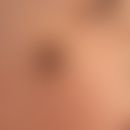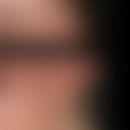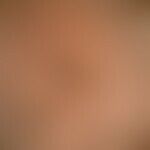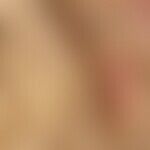Synonym(s)
HistoryThis section has been translated automatically.
DefinitionThis section has been translated automatically.
Rare, hereditary growth disorder of the hair with periodic calibre fluctuation of the hair shaft and breakthrough disorders (monile = pearl necklace)
You might also be interested in
EtiopathogenesisThis section has been translated automatically.
Autosomal dominant inheritance, high penetrance, variable expressivity, rarely also autosomal recessive inheritance. Point mutations were detected in the highly conserved helix termination motif of the basic hair cortex keratins hHb1 and hHb6. The associated genes KRT17 and KRT18 are located on chromosomes 12q13 and 12q11-q13. The mutations lead to a disrupted network of keratin filaments in the hair cortex cells and thus to increased hair fragility.
ManifestationThis section has been translated automatically.
ClinicThis section has been translated automatically.
- Hair shaft anomaly with intermittent knotty bulges of the hair shaft. In the first months of life growth of a brittle, thin hair with spindle formation; breaking off the hair usually after a few millimetres of growth. Clinical picture with fragile, pearl-like thickened hairs, rarely longer than 1 cm. The thicker hairs are formed in 24-48 hour intervals. The thickened hairpieces are pigmented, the thinned ones pigment-free. Small, skin-coloured or red, follicular, horny papules. Picture of alopecia. Involvement of eyebrow, eyelash, axillary and pubic hairs is possible. Rarely isolated occurrence = pilary type.
- Mostly occurrence of accompanying symptoms:
- Keratosis follicularis, especially on the sides of the upper arm, trunk, face and neck (= pilocutaneous type according to Heydt).
- Additionally koilonychia (= pilo-cutano-ungual type according to Heydt).
- Optional: Juvenile cataract, constricted visual field, dental anomalies, cutis laxa, syndactylia, physical and mental retardation, epilepsy, schizophrenia, increased arginic acid excretion.
HistologyThis section has been translated automatically.
DiagnosisThis section has been translated automatically.
Differential diagnosisThis section has been translated automatically.
TherapyThis section has been translated automatically.
Progression/forecastThis section has been translated automatically.
The hair abnormality can last a lifetime, but it can improve permanently in adolescence or sporadically during pregnancy.
LiteratureThis section has been translated automatically.
- Betz RC (2014) Alopecia and Hpotrichoses in childhood. dermatologist 65: 520-526
- Kirkegaard AO et al (2017) Monilethrix is a hereditary hair shaft disorder.
Ugeskr Laeger 11: 179. - Kuhlwein A, Müller V, White J (1983) The Monilethrix syndrome. Act Dermatol 9: 27-30
- Landau M et al (2002) Medical Pearl: an easy way to diagnose severe neonatal monilethrix. J Am Acad Dermatol 46: 111-112
- Sabouraud R (1892) Sur les cheveux moniliformes. Ann Dermatol Venereol 3: 781-793
- Smith WG (1879) A rare nodose condition of the hair. Br Med J 2: 291-292
- Smith F (2003) The molecular genetics of keratin disorders. At J Clin Dermatol 4: 347-364
- Carpenter R (1983) On the Monilethrix. Dermatol monthly 169: 638-645
Incoming links (16)
Aplasia moniliformis; Aplasia pilorum intermittens; Arginic succinic acid syndrome; Beaded hairs; Hair shaft anomalies (overview); Hereditary koilonychia; Hypotrichosis; Keratin; Monilethrix; Moniletrichia; ... Show allOutgoing links (8)
Hair shaft anomalies (overview); Keratosis pilaris; Koilonychie; KRT17 Gene; Papel; Pili anulati; Pili torti; Trichorrhexis nodosa;Disclaimer
Please ask your physician for a reliable diagnosis. This website is only meant as a reference.









